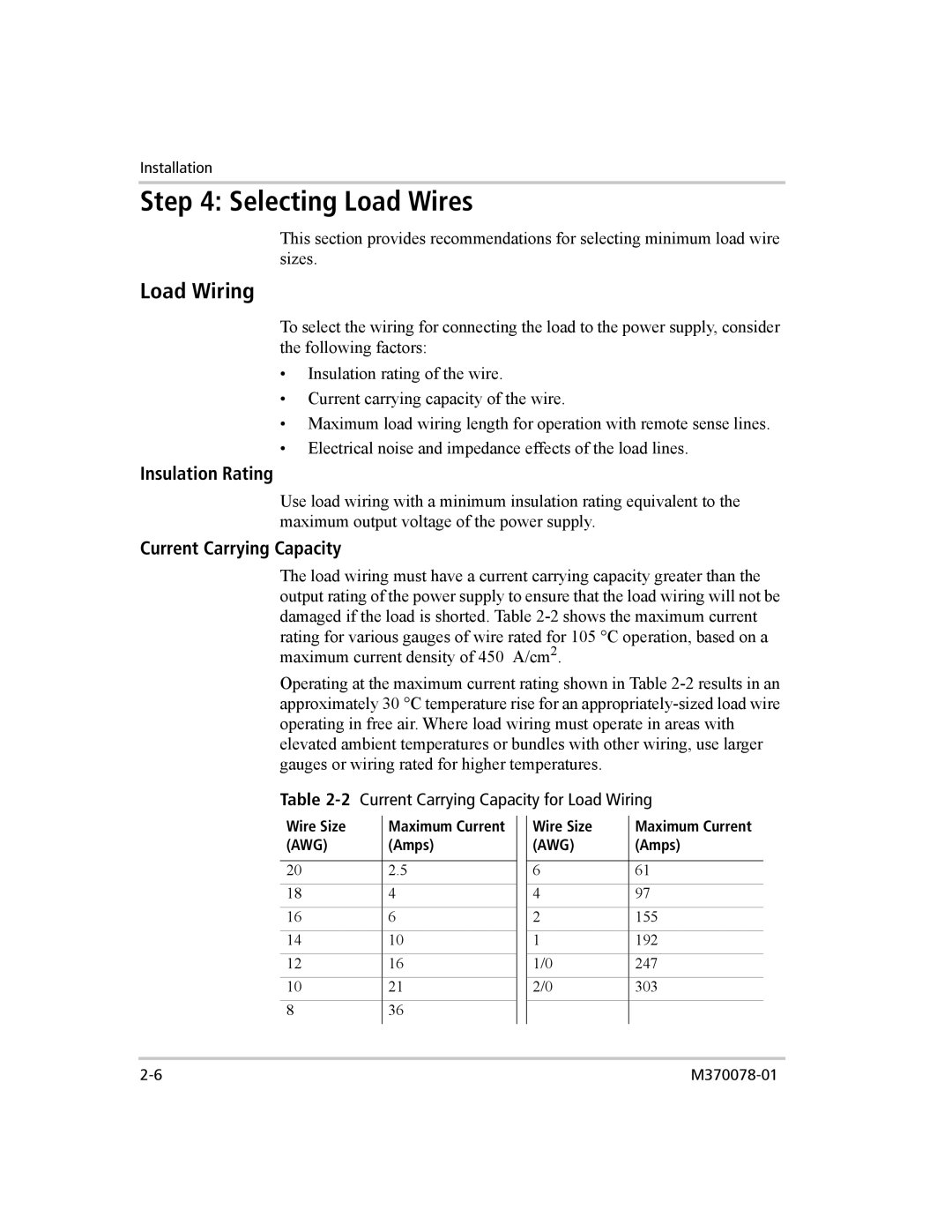
Installation
Step 4: Selecting Load Wires
This section provides recommendations for selecting minimum load wire sizes.
Load Wiring
To select the wiring for connecting the load to the power supply, consider the following factors:
•Insulation rating of the wire.
•Current carrying capacity of the wire.
•Maximum load wiring length for operation with remote sense lines.
•Electrical noise and impedance effects of the load lines.
Insulation Rating
Use load wiring with a minimum insulation rating equivalent to the maximum output voltage of the power supply.
Current Carrying Capacity
The load wiring must have a current carrying capacity greater than the output rating of the power supply to ensure that the load wiring will not be damaged if the load is shorted. Table
Operating at the maximum current rating shown in Table
Table 2-2 Current Carrying Capacity for Load Wiring
Wire Size | Maximum Current |
(AWG) | (Amps) |
|
|
20 | 2.5 |
|
|
18 | 4 |
|
|
16 | 6 |
|
|
14 | 10 |
|
|
12 | 16 |
1021
836
Wire Size | Maximum Current |
(AWG) | (Amps) |
|
|
6 | 61 |
4 | 97 |
2 | 155 |
1 | 192 |
1/0 | 247 |
2/0 | 303 |
|
|
